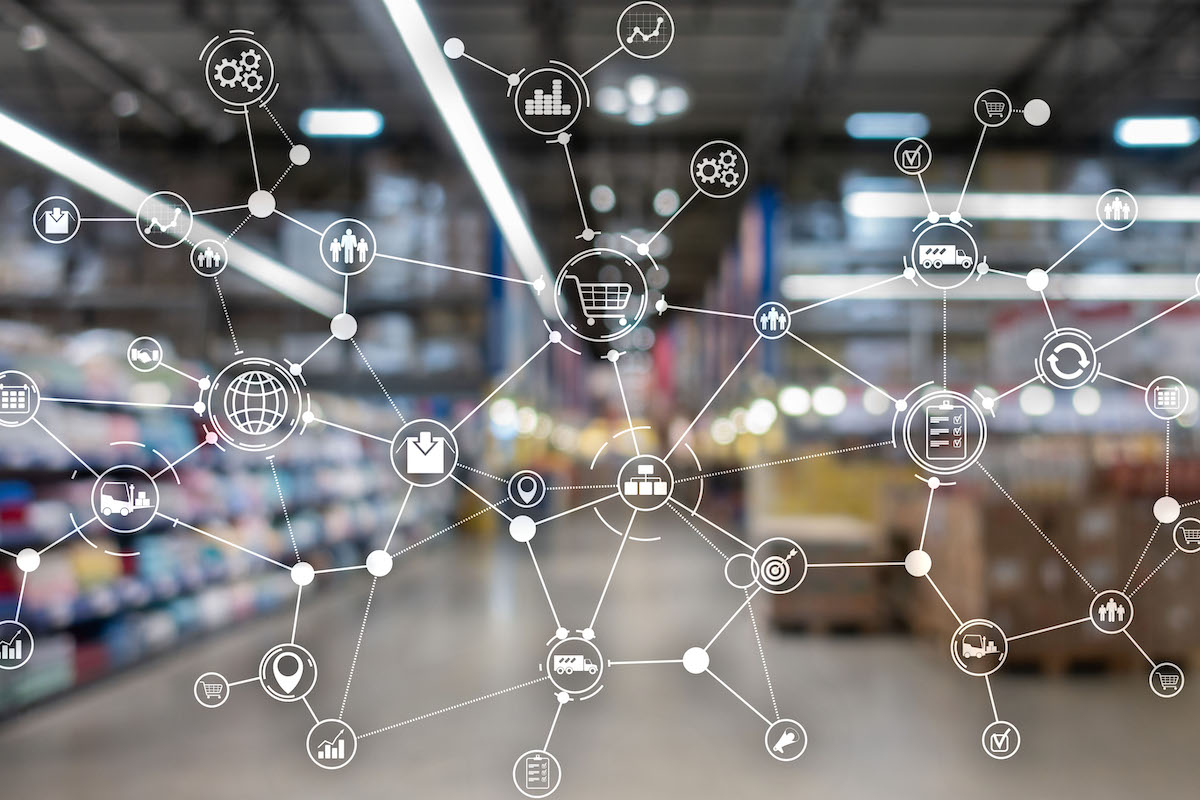Upleveling Supply Chain Management with IIoT Solutions
It would be an understatement to simply say data consumption is expanding. The reality is, it is exploding at a global level. At this moment, analysts expect data consumption to expand from 74 zettabytes in 2021 to an estimated 149 zettabytes in 2024. The suspects of this vast increase have little to do with Netflix streams and TikTok videos either. When considering the amount of product consumed by the global population, far past consumer data stock piles, it becomes evident that several metric tons of data are being generated by the supply chain as well; machine automation ensures it.
The arrival of Industry 4.0 is poised to revolutionize the way companies manufacture, improve and distribute their products through the integration of new technologies, including Internet of Things (IoT), cloud computing and analytics, AI and machine learning. The need to fit the mold of Industry 4.0 plagues most manufacturers with a shortage of real data. Our easily viewable galaxies of data are becoming boundless black holes. The leading issue: Analog and legacy equipment rely on manual processes, resulting in 50-75% of blind spots throughout facilities and operations.
The Missing Piece in Industrial Operations
Close to 31 billion IoT devices are floating around the world today. This ongoing rise in Industrial Internet of Things (IIoT) usage hasn’t done manufacturers any favors. Day by day, each device pumps out more than their fair share of data. Due to tightening margins, the need for turn-around is more urgent, and the competition is fiercer than ever. Ensuring data transparency at all stages of the supply chain is essential for modern logistics and production decisions, as well as for the success of AI initiatives.
Supply chain inefficiencies are expected to cost companies close to $800 billion, unless manufacturers transform legacy supply chain operating models immediately. Plant and supply chain managers need greater operational visibility and access to data to remove friction and wasted man hours. IIoT sensors placed on tools and parts create operational visibility and insights with a Digital Twin. Despite the necessity, supply chain leaders are not fully capitalizing on the potential. A recent Gartner survey showed just 27% of chief supply chain officers plan to implement a digital twin.
The Value of Industrial IIoT Data in Manufacturing Decision Making
Through implementation, organizations can improve performance and reduce downtime due to unscheduled maintenance or replacements. For example, General Electric has stated that its real-time monitoring capabilities have saved customers more than $1.5 billion through use of digital twins to reduce downtime and maintenance costs. Alerts of impending mechanical failures can even preempt lost batches of materials due to these unforeseen events.
Digital asset tracking offers precise location data for assets globally, enhancing accountability, collaboration, and a customer-centric business approach to easily locate assets in real-time and save costs using valuable location insights. Shelf sensors detect low stock levels, prompting reorders. Telematics devices are planted on vehicles to track speed, location, acceleration, maintenance, and time on the road. Even time spent idling is captured to curtail emissions. Whole fleets are tracked so businesses, and even consumers, can see where materials and goods are in real time.
Additionally, poor coordination among supply chain partners costs the U.S. food industry $30 billion annually. The food and beverage industry uses predictive maintenance powered by IIoT in the supply chain to improve quality and efficiency to meet regulatory demands without compromising safety. By adopting sensors on sensitive raw material containers, organizations can enable real-time monitoring of environmental factors. Additionally, hazardous analyses can be performed in real time to mitigate potentially catastrophic events. Those same vehicles tracked by telematics can also include sensors that track temperature, CO2 levels, humidity, and more — all critical factors in avoiding spoiled products, recalls, and the damaged reputation that comes along with such an event.
Track The Untrackable
Having continuous and contextual visibility into existing blind spots forms the cornerstone of digital transformation initiatives in both commercial and classified manufacturing sectors. By integrating an IIoT asset tracking and digital twin solution, you can enhance yield, profitability, and compliance, all while reducing waste, maintenance costs, and energy consumption.
About the author
 This article was written by Bryan Merckling, CEO of Thinaer, a leading IoT digital transformation company that improves the bottom line, operations, and decision-making for companies in various industries including Aerospace & Defense, healthcare, pharma, construction, oil and gas, and supply chain. Bryan is a thought leader, public speaker and continues to be a pioneer applying leading edge technology to everyday business problems.
This article was written by Bryan Merckling, CEO of Thinaer, a leading IoT digital transformation company that improves the bottom line, operations, and decision-making for companies in various industries including Aerospace & Defense, healthcare, pharma, construction, oil and gas, and supply chain. Bryan is a thought leader, public speaker and continues to be a pioneer applying leading edge technology to everyday business problems.



